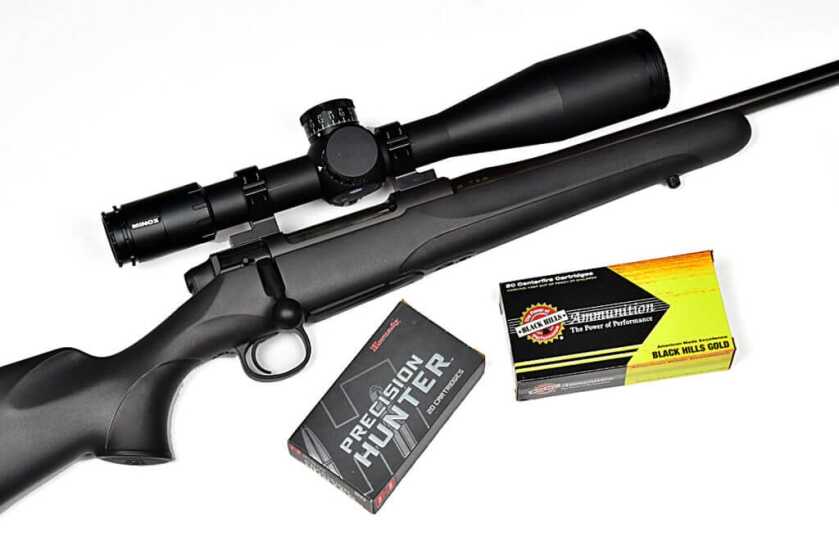
When the Mauser M18 rifle was first introduced last year, reactions were predictably split. Some hunters immediately rushed out to buy one while some of the more stodgy types among us declared, “That’s not a Mauser – it’s a push feed!”
Setting aside for a moment the fact that Mauser has previously made a push-feed rifle (in the form of the M12), the party-pooper contingent completely missed the point of the M18 because they were comparing it to the classic M98 rifle. If you want one of those, you better be prepared to lay out some serious cash. Current production M98 Mausers, with their double square bridge receivers, elegant lines, high-grade stocks, large claw extractors, and controlled-round feeding, have starting prices that range from $8,000 to more than $14,000, depending on the model.

The M18, in contrast, was introduced as the “Volkswaffe,” or the People’s Rifle, with an MSRP of just $699.
What you’ll get for that amount of money, which is slightly higher than prices of most US-made economy rifle models, turns out to be quite a bit more than just a basic, no-frills rifle. Starting at the business end, the M18 has a crowned, cold-hammer-forged barrel measuring 22 inches in rifles with standard chamberings and 24 inches for guns in magnum persuasion. Mauser says the barrel is made of “special steel,” but won’t reveal exactly what that proprietary chrome-moly composition is. Whatever it is, Mauser clearly got something right with these barrels if the results of my accuracy testing, which we’ll get to shortly, is any indication.
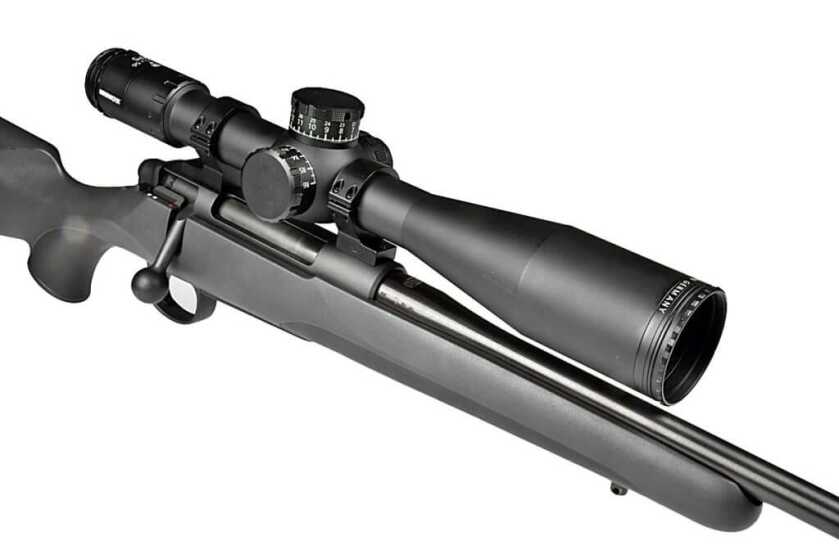
The barrel is mated to a cylindrical steel receiver with a full-diameter, three-lug bolt. The design of the receiver partially explains why Mauser is able to offer the rifle at such an affordable price, but it’s also the source of my only less-than-enthusiastic observation about the rifle. Cycling of the bolt required an inordinate amount of force to turn the bolt handle down when chambering a round. I suspect this is due in part to the short, 60-degree bolt throw – which I very much like for the generous scope clearance it provides — combined with the resistance of the twin ejectors inside the bolt face. The remedy, I quickly discovered, was to simply push the bolt forward smartly and with a bit of force when chambering a round, versus slowly, before turning the bolt handle down. When I did that, everything worked smoothly, and only a small mental adjustment was required to run the gun like a champ.
On the upper right side of the receiver, within easy reach of the thumb, you’ll find a three-position safety. As with most such designs, the middle, safety-engaged position allows you to safely cycle rounds through the action, while the rearmost position locks the bolt down. The safety lever operates with the right amount of resistance, but it makes a fairly loud click when you push it forward to the firing position. I found I could ease it forward quietly using a thumb and one forefinger.

The M18 utilizes a robust polymer stock which is stiffer than many you’ll find on rifles in this price category. It has straight, American-style lines and soft grip inlays on the pistol grip and forearm for an improved grip in wet weather. The rifle’s barrel, I was pleased to discover, was truly free-floated in the stock. Available initially in only black color, the rifle is now offered with stocks in several additional earth-toned colors. It is equipped with a generously sized rubber recoil pad which is, surprisingly, easily removable. You simply press simultaneously on two recessed tabs marked “Mauser,” situated an inch forward of the recoil pad, and pull the pad off to reveal a small storage space.
Sitting nearly flush with the bottom of the stock is a detachable polymer magazine which holds five rounds in standard calibers and four in magnum calibers. I found this magazine to be better designed than many. It was easy to load rounds into the magazine simply by pushing them straight down until they clicked into place. The magazine inserted easily into the magazine well, even when the bolt was closed, and popped freely into the hand with a push of the magazine-release button, which is protected against accidental activation within a recess in the bottom of the stock.

The M18 comes with a sub-MOA accuracy guarantee – more about that in a moment – and an excellent trigger. The trigger on my test rifle, chambered in 6.5 Creedmoor, broke at an average pull weight of 3 lbs, 5 oz, but it honestly felt lighter than that. You can, happily, adjust the trigger without disassembling the gun by using a provided hex wrench to insert into a hole in the bottom of the stock, above the trigger, to change the pull weight. According to Mauser, the trigger weight is adjustable on the low end to little more than 2 lbs. You can also increase the pull weight to a bit more than 4 lbs. The trigger on my test rifle broke so cleanly that I left it at the factory setting for testing.
With the magazine full and in place, I shook the rifle to see if the ammo rattled or if anything else on the gun made any unwanted noise. It didn’t, and I immediately made a mental note that this rifle would be great for hunts requiring careful stalks. That’s partly because it’s quiet, and partly because the rifle, when chambered in standard calibers, weighs just 6.4 pounds, making it light enough to qualify as a go-anywhere rifle.
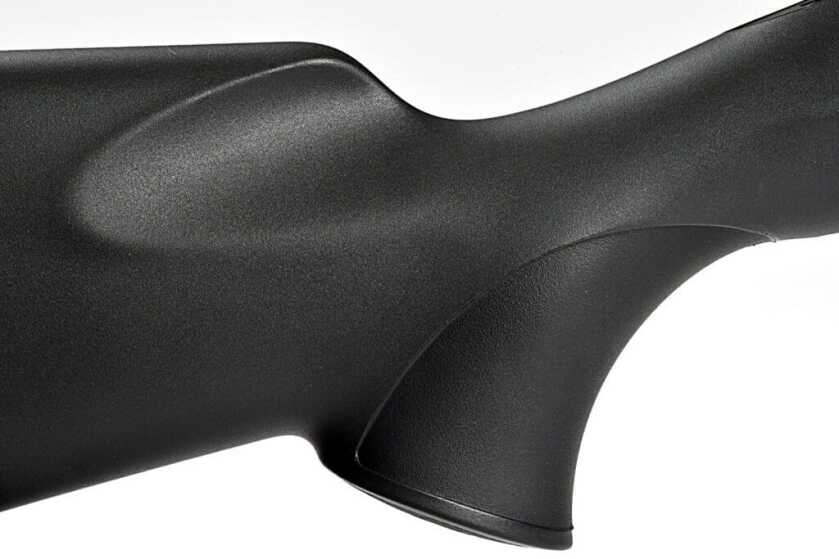
Like most rifles with light polymer stocks, the gun has a weight-forward balance, but it evens out nicely with the addition of rings and a scope. To set the rifle up for testing, I used a set of long-favored Talley lightweight rings. Deciding it would be somewhat cool to use a German scope with a German rifle, I mounted a rather imposing Minox ZP5 5-25x56mm scope. While I would likely use something considerably lighter and less-powerful for hunting, this scope, with its side parallax adjustment turret, provided the crisp view at a higher magnification that I like when testing rifles at the bench.
Functionally, apart from the somewhat stiff resistance encountered when operating the bolt handle, which I was able to mitigate by pushing the bolt forward with a bit of force, the M18 worked flawlessly. Loading, firing, and ejection went off without a hitch during the process of testing five different factory 6.5 Creedmoor loads and spent cases showed no unusual wear or signs of high pressure.

Velocities were about what I would expect from the 22-inch barrel, with most loads running anywhere from 123 to 193 fps slower than factory stated numbers. That was not surprising, considering that most manufacturers test 6.5 Creedmoor loads with longer barrels. Federal’s Big Game 120 gr. Trophy Copper load actually stepped out slightly faster than its factory advertised velocity.
The M18, as noted, comes with an MOA accuracy guarantee, as do many of today’s value-priced rifles. In testing a lot of these budget-friendly rifles, however, I have found that many have a disconcerting tendency to meet that standard with only one or two tested factory loads. The M18 met it in spades.

All five loads I pushed down the barrel produced one-inch or smaller – sometimes way smaller – best groups at 100 yards, despite shooting in wind varying 10-15 mph. The rifle showed a real fondness for Hornady’s 143 gr. ELD-X bullet, which I tested in both Hornady and the Black Hills loads. In each case, best groups measured around a half inch.
To put this performance into perspective, three of the five tested loads produced sub-MOA average groups, and the other two were only slightly over one inch. In fact, if you calculate the average size of all average groups, that works out to 0.97 inches. Doing the same with the best groups returns a charming figure of 0.72 inches.
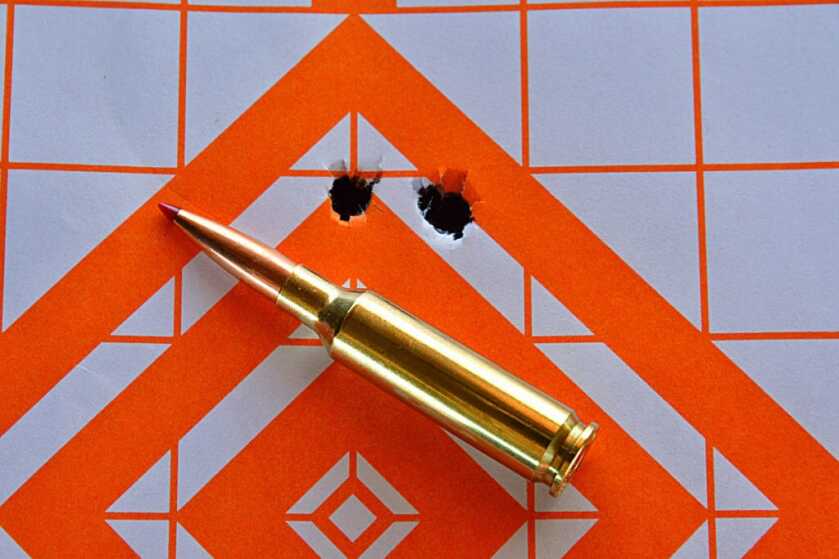
It’s one thing for a rifle in this price range to produce a few tight groups. It’s quite another for one to shoot so consistently well across a range of tested loads, as the M18 did for me. Granted, I tested the rifle with three-shot groups, versus five-shot groups, as I see little value in testing hunting rifles equipped with slender barrels with five-shot groups. To my way of thinking, if you haven’t gotten the job done with three shots when hunting deer-sized game, the odds are dismally slim that you’re going to salvage the opportunity with two more shots.
I would further suggest that if you can’t get the job done with the Mauser M18, something other than the rifle is at fault.

Mauser M18 Rifle
Caliber: 6.5 Creedmoor, as tested
Action Type: bolt action
Barrel: 22-inch chrome-moly
Finish: black
Stock: matte-black synthetic
Magazine/capacity: detachable, 5+1
Sights: None, drilled and tapped
Trigger: adjustable single stage
Overall Length: 41.75 inches
Weight: 6.4 pounds
MSRP: $699
URL: www.mauser.com
Mauser M18 Rifle 6.5 Creedmoor
| Load | Avg. Velocity (feet per second | Avg. Group 100 yards | Best Group 100 yards |
| Black Hills Gold 143 gr. ELD-X | 2,507 | 0.96 | 0.51 |
| Federal Big Game 120 gr. Trophy Copper | 2,809 | 1.13 | 0.97 |
| Federal Non Typical Whitetail 140 gr. SP | 2,620 | 1.19 | 1.00 |
| Hornady Professional Hunter 143 gr. ELD-X | 2,577 | 0.82 | 0.47 |
| Winchester Match 140 gr. BTHP | 2,569 | 0.78 | 0.66 |
Note: Accuracy measured with three-shot groups in wind 10-15 mph at 100 yards. Velocity measured as a three-shot average with a Competitive Edge Dynamics M2 chronograph.


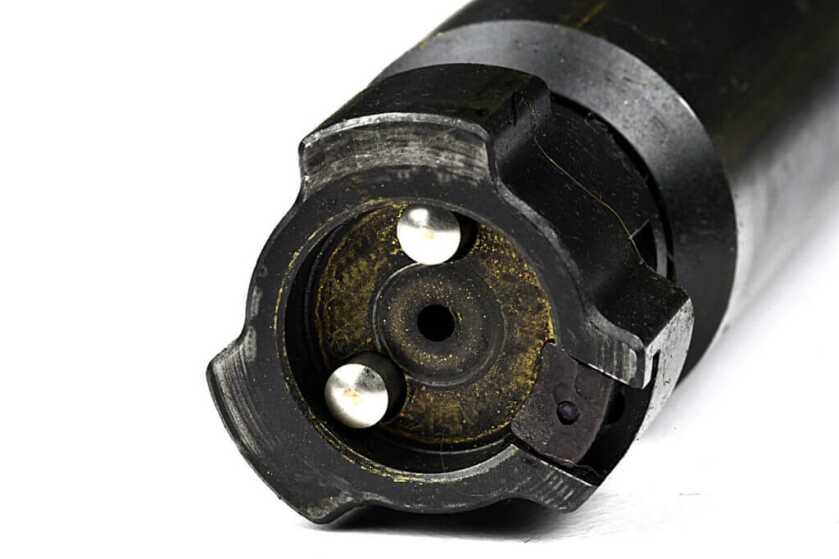
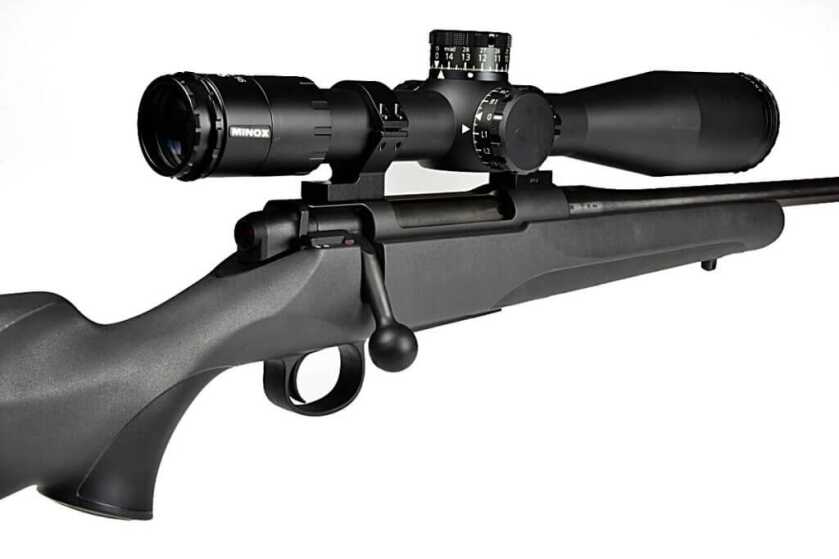
CONTACTS:
Black Hills Ammunition
Competitive Edge Dynamics
Federal Premium Ammunition
Hornady Ammunition
Mauser
Minox
Nagel’s Gun Shop
Talley Manufacturing
Winchester Ammunition


Interesting observation, suggesting that a three shot group has more value as a testing protocol for a hunting rifle, while suggesting sub MOA is vital in a hunting rifle. I would think regardless of the barrel diameter and the effects of heat on accuracy, I would simply do a five shot test for comparison.
Concerning the push-feed in a Mauser, go buy and old 98, re-barrel it, and avoid the perceived push feed concerns.
I agree. 5 shots has always been the standard for saying if a gun was a 1 moa shooter, 1/2 moa shooter etc.
Easy way to turn a 1.5 moa shooter into a 1 moa shooter. Fire less shots.
Superior accuracy through marketing?
I wish they’d make a stainless version for a few more $$$ for those of us that actually hunt in the elements-
At least it’s salt bath nitrided